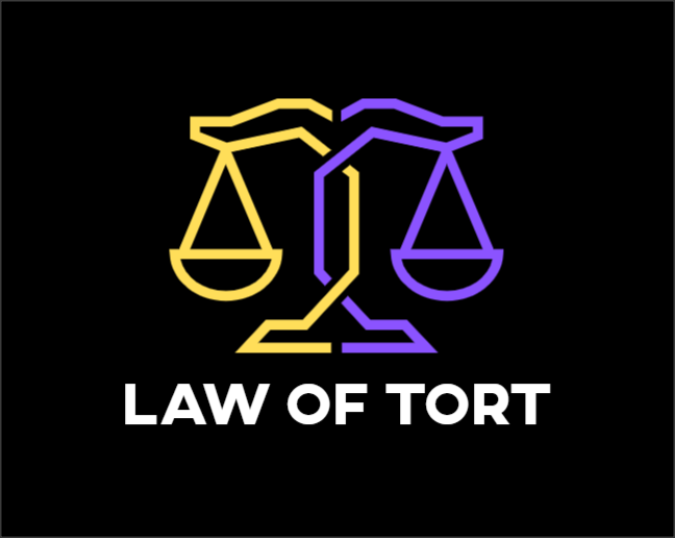This case analysis prepared by Deepika pursuing BA-LLB from IIMT & School of Law, GGSIPU, Delhi. In this case analysis, a landmark case of tort law Rylands v. Fletcher has been discussed. This is a very significant case, as the rule of ‘Strict Liability’ originated from this case.
Introduction
Rylands vs. Fletcher (1868) L.R. 3 H.L. 330 is one of the landmark cases of tort law. In this case, The House of Lords laid down the rule recognizing ‘No Fault’ liability. The ‘Rule of Strict Liability’ originated in this case. By this rule, a person may be liable for some harm even though he is not negligent in causing the same. Further, this case paved the way for ‘The Rule Of Absolute liability’ in India.
Judges (sitting)
Lord Cairns and Lord Cranworth
Decided on
17 July 1868
Major contribution of the case
‘The Rule of Strict Liability’ originated in this case.
Facts of the case
The defendant, Rylands got a reservoir constructed, through independent contractors, over his land for providing water to his mill. There were some old disused shafts under the site of the reservoir, which the contractors failed to observe. So they didn’t block the shafts. When water was filled within the reservoir, it burst through the shafts. As a result plaintiff’s coal mines on the adjoining land was flooded. The defendant didn’t know about the shafts and he had not been negligent although the independent contractors had been. The negligence was on the part of independent contractors. Since the plaintiff, Fletcher has to suffer losses, he sued defendants.
Issues raised
- Whether there was any nuisance or not?
- Was the use of Defendant’s land unreasonable and thus was he to be held liable for damages incurred by the Plaintiff?
The Court Of Liverpool
This court’s ruling favoured the plaintiff on the basis of both trespass, (as the flooding was deemed not to be “direct and immediate”) and nuisance. Later a court order led to an arbitrator from the Exchequer of Pleas, who was appointed in December 1864. The arbitrator decided that the independent contractors were liable for negligence since they had known about the old mine shafts, still showed negligence in dealing with it. The arbitrator said, Rylands, had no way of knowing about the mine shafts, so he couldn’t be liable.
Exchequer of Pleas
The case then went to the Exchequer of Pleas, where it was heard between 3rd and 5th May 1865. It was heard on two points:
- Whether the defendants were liable for the actions of the contractors and
- Whether the defendants were responsible for the damage regardless of their lack of negligence.
They decided for the first point that the defendants were not liable, but they had a diverse opinion on the second point. Channell B recused. Pollock CB and Martin B held that the defendants were not liable, as since a negligence claim couldn’t be brought, there was no valid case. Bramwell B, dissenting, argued that the claimant had the right to enjoy his land free of interference from water that came from defendants reservoir, and so as a result the defendant was guilty of both trespass and the commissioning of a nuisance. He stated that “the general law, wholly independent of contract” should be that the defendants were liable, “on the simple ground that the defendants have caused water to flow into the [claimant]’s mines, which but for their actions wouldn’t have gone there…”
Court Of Exchequer Chamber
Fletcher was angered by the decision of the three exchequer judges and appealed to the exchequer chamber composed of six judges. The six judges “overturned the previous decision”. Fletcher. Blackburn J spoke on the behalf of all the judges and said that “we, the judges of the exchequer think that correct rule of law is that, any person, who for his own intentions brings on his land anything, accumulates and keeps on the land that thing, which is likely to cause trouble if it escapes, must keep it at his own risk, and, if he doesn’t do so, is clear (without need for further information), in charge of all the damage which is that the natural effect of its escape.” Blackburn J further said that that person can excuse himself from the liability by taking certain defences like – that the escape was caused because of the plaintiff’s default; or by proving that the escape was a consequence of the act of God” (Fordham Margaret1995)
The judges concluded that “none of these excuses had been proven in the case”, and it was, therefore “unnecessary to find out what another excuse would be sufficient”. The judges, in the judgement, relied on the “basis of the liability for damages of land through the tort of chattel of trespass, the tort of nuisance”, as well as “the scienter action (common law rule that deals with the damages directly done by animals to human beings)” (Duhame.org, 2009).
The court of Exchequer Chamber provided a rule when the liability of an owner, who has brought any dangerous in his premises can arise. At the same time, the court also discussed certain defences which can absolve the liability.
The court of Exchequer Chamber held Rylands liable for the damage done to the Fletcher. The court held that the defendants owed a duty of care towards the risk, as they were aware of the fact that if that quantity of water would escape, it would be harmful. There was a want of care by the defendants, as they were doing unnatural use of their land by storing that huge quantity of water. Though it was not harmful that time, but would be harmful if escapes.
Rylands felt that this was not just. He appealed to the House of Lords.
House Of Lords
The House of Lords dismissed Ryland’s appeal. They agreed with the six exchequer judges but went further to feature a limitation on the liability.
Judgment
The House of Lords dismissed the appeal and agreed with the six Exchequer judges. Lord Cairns, while speaking for the House of Lords, stated their agreement of the rule stated above by Justice Blackburn in the court of Exchequer Chamber but included a further limitation on liability. The one more requirement is that the land from which the escape occurs must have been modified in a way which would be considered non-natural, unusual or inappropriate. The decision of House of Lords added a requirement that the use be ‘non-natural’. The judgement of this case was delivered on 17 July. In this the court consisted of only two judges, Lord Cairns and Lord Cranworth; Lord Colonsay didn’t attend the case.
Three essentials, for the application of the Rule of Strict Liability
- Some dangerous thing must have been brought by a person on his land.
According to this rule, the liability for the escape of thing from one’s land arises when the thing collected was a dangerous thing. It means a thing likely to do mischief if it escapes. In Rylands v. Fletcher, the dangerous thing was a very large body of water
- The thing thus brought or kept by an individual on his land must escape.
For the rule in Rylands v. Fletcher to apply, it is also essential that the thing causing the damage must escape to the world outside the occupation and control of the defendant
- It must be non-natural use of land.
Water collected within the reservoir in such an enormous quantity in Rylands v. Fletcher was held to be non-natural use of land. In order to show that, the use is non-natural, it must be shown that use is some special use bringing with it increased danger to others.
Exceptions to the Rule of Strict Liability
A number of defences to the rule of strict liability too was developed in this case and some later cases:
- Escape was owing to the plaintiff’s default
- Escape was a consequence of vis major
- Consent of the plaintiff
- Act of third party
- Statutory authority
Impact of the case in India
In M. C. Mehta v. Union Of India, the Supreme court took a bold decision holding that it was not bound to follow the 19th-century rule of English law. The honourable Supreme Court said it could evolve a rule suitable to the social and economic conditions prevailing in India at the present day. It evolved the rule of ‘Absolute Liability’ as a part of Indian law in preference to the rule of Strict Liability laid down in Rylands v. Fletcher. This rule was not subject to any of the exceptions under the rule in Rylands v. Fletcher. The defences to the Rule of Strict Liability can be used by the persons who had established ‘hazardous and inherently dangerous’ industries to escape the liability for the havoc caused, by pleading some exceptions. So to remove that grey area and in order to increase accountability on the part of persons engaged in such kind of activities, the rule of ‘Absolute Liability’ has been evolved in India.
Conclusion
Ryland vs. Fletcher played a great role in deciding owners’ liability when he is bringing any dangerous object in his premises. It was necessary to have a law that could increase the duty of the owner. So that he can be more careful while bringing any dangerous object in his premises. The world is progressing very fast and in this era of industrialization, privatisation and globalization disputes regarding the duty of care are burgeoning rapidly so there was a need for a law that could solve these problems. This was done in this case. In the context of India, this Rule of strict liability paved the way for ‘The Rule of Absolute Liability’ in India.
References
- Dr R. K. Bangia, 17th edition
- https://en.m.wikipedia.org/wiki/Rylands_v_Fletcher
- https://www.lawteacher.net/cases/rylands-v-fletcher.php
Latest Posts
- Debate Competition at SVKM’S NMIMS School of Law: June 8|Last Date
- Assault, Battery, & Mayhem
- A BRIEF OVERVIEW ON THE CONCEPT, FORMALITIES, CAPACITY AND REVOCABILITY OF HIBA
- Civil and Criminal Negligence
- Doctrine of Pious Obligation and Antecedent debts: A son’s duty to pay off his father’s debts
- IRRETRIEVABLE BREAKDOWN AS A GROUND FOR DISSOLUTION

